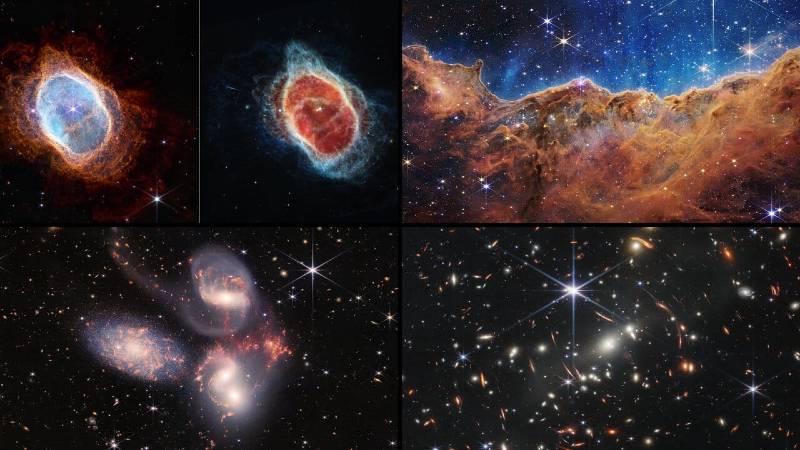The James Webb Space Telescope has already given humanity a magnificent first look at the deepest and brightest infrared image of the early Universe to date, extending humanity’s perspective further into time and space than ever before.
The most ambitious telescopes ever created by mankind have recently produced five more breathtaking full-color photos, which NASA has just unveiled.
Gregory L. Robinson, the James Webb Space Telescope Program Director, hinted at the commencement before the announcement, saying, “You haven’t seen anything yet.”
It goes without saying that the photographs have undergone colorization during processing, so even while they may not appear accurate to the unaided eye, they nonetheless reflect actual data and help scientists identify and comprehend the intricate structures being scanned. These improvements are only for scientific purposes.
Amazingly, the photos from the telescope that we can see here only span five days. They are the result of years of toil from many people all around the world, and this is just the beginning. Enjoy these amazing visions, which are now more detailed and clear than ever.
The Deep Field Image
We’ve already seen the deep field image of SMACS 0723, filled to the brim with galaxies frozen in time billions of years ago. Today, the Webb team provided some more insight into the image.
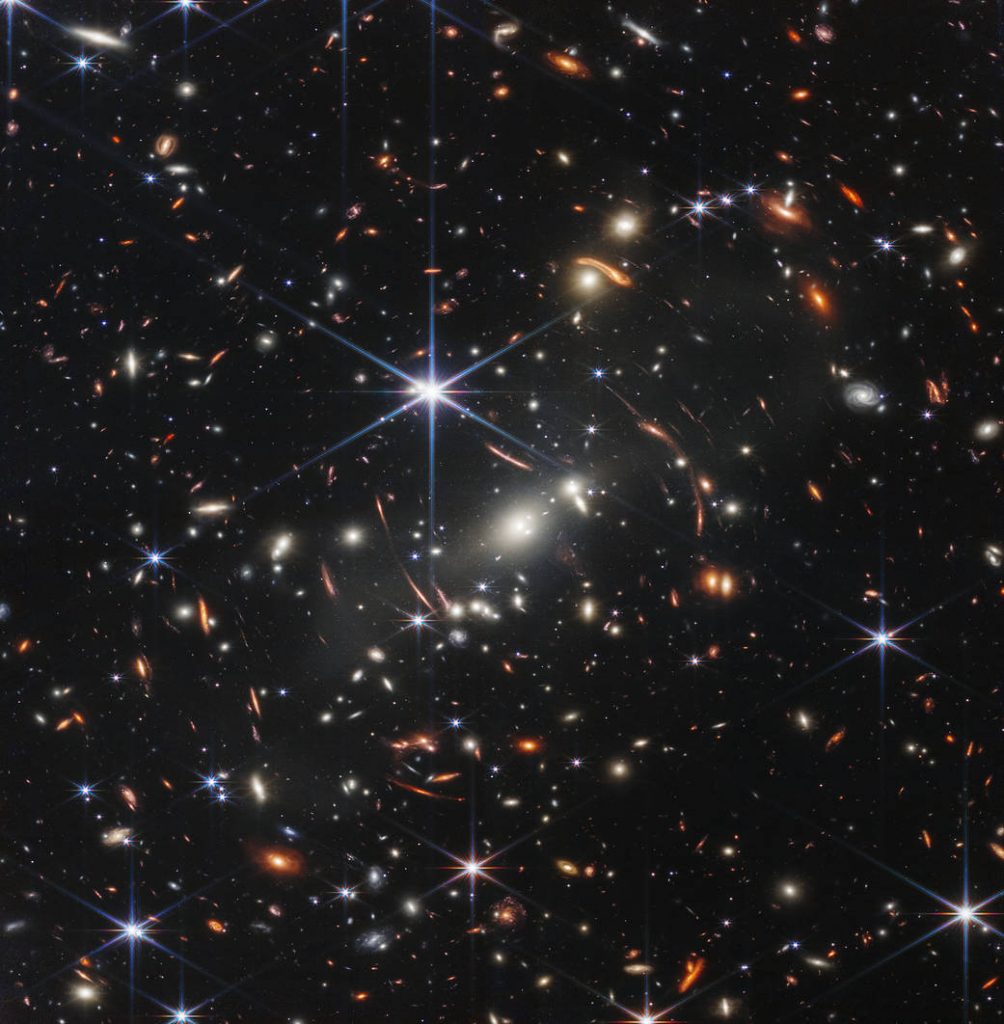
The Southern Ring Nebula
What you can see in the image below are breathtaking waves of death from the Southern Ring Nebula, which are gas shells that have been shed by dead stars.
A stunning, incandescent blob in the southern constellation of Vela, the Southern Ring Nebula, also known as NGC 3132, is around 2,000 light-years away.
Two stars may be seen in its center, which is very evident in the picture to the right below. The fainter object is a white dwarf, which is the collapsing core of a dead star that formerly had a mass that may be up to eight times that of the Sun.
When it reached the end of its existence, the outer layers were blown off, and the core collapsed into an extremely dense object with a mass that could reach 1.4 times that of the Sun and an area the size of Earth. It still sparkles, but that is just due to leftover heat. It will cool to a dead, black object over the course of billions of years.
This dust-covered star has finally been made visible by JWST. The brighter star is still developing and will eventually erupt into its own nebula.
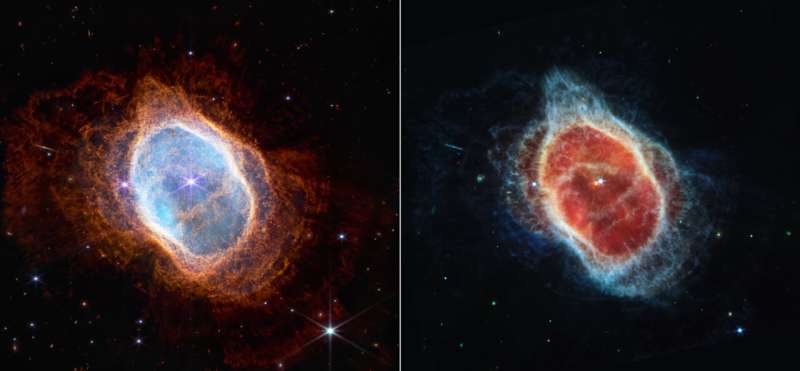
Webb’s Near-Infrared Camera (NIRCam) on the left shows a blue haze of hot ionized gas from the residual heated core of the dead star as well as bubbling orange hydrogen from newly produced expansions.
Because they accumulate on the surface of hydrogen dust rings, blue hydrocarbons in the image on the right, taken by Webb’s Mid-Infrared Instrument (MIRI), generate patterns like those of the orange in the preceding image.
According to NASA, Webb will enable astronomers to examine this particular planetary nebula in great detail. Researchers will improve their understanding of these objects by learning which chemicals are there and where they are distributed within the shells of gas and dust.
Here is a 1998 image of the Southern Ring Nebula obtained by Hubble to give some background about the new degree of The Deep Field Image.

The deep field image of SMACS 0723, which is bursting at the seams with galaxies frozen in place billions of years ago, has previously been revealed. The Webb team revealed more information about the photograph today.
Exoplanet WASP-96b
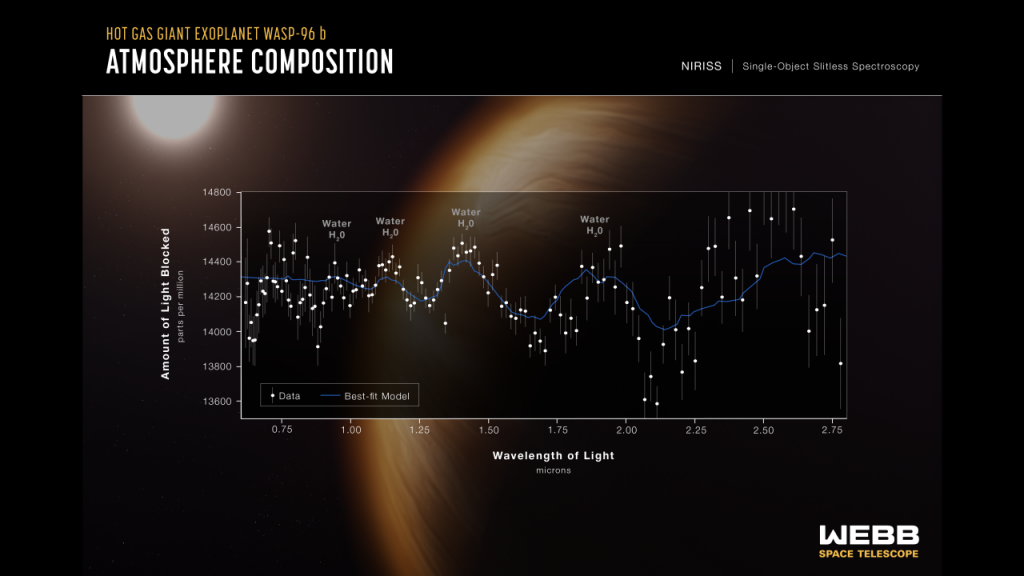
Exoplanet WASP-96b, a hot, puffy globe with a 3.5 Earth-day orbit around its star, was one of JWST’s objectives. 1,150 light years away, it is whirling around a star that resembles the Sun.
WASP-96b is much puffier than any gas giant in our Solar System and much hotter, with a temperature of more than 1,000 degrees Fahrenheit. Its mass is less than half that of Jupiter and its diameter is 1.2 times greater (538 degrees Celsius).
The fact that JWST was able to identify signs of clouds and haze in the exoplanet’s atmosphere and record “the clear trace of water” is remarkable.
On June 21, over a 6.4-hour period, JWST was able to identify the existence of particular gas molecules around the planet by analyzing minute drops in the brightness of particular hues of light. This is our most thorough observation of an exoplanet’s atmosphere to date.
What Is The Process To Observe These Exoplanets?
A very little fraction of the star’s light should pass through the star’s atmosphere, if it has one, when an exoplanet transits in front of its host star, which is what is known as a transit. When light is absorbed and re-emitted by substances in the atmosphere, scientists can examine the spectrum of that light to seek for wavelengths that are brighter or dimmer. We can learn more about those elements from this.
It’s interesting because earlier observations implied that WASP-96b had a clean environment free of clouds. Therefore, there is still a lot that we don’t know about this peculiar exoplanet.
Although the Hubble Space Telescope did so in 2013, Webb’s detection is faster and much more detailed, and it merely provides a glimpse of what may be in store for our understanding of extraterrestrial worlds in the future.
Stephan’s Quintet
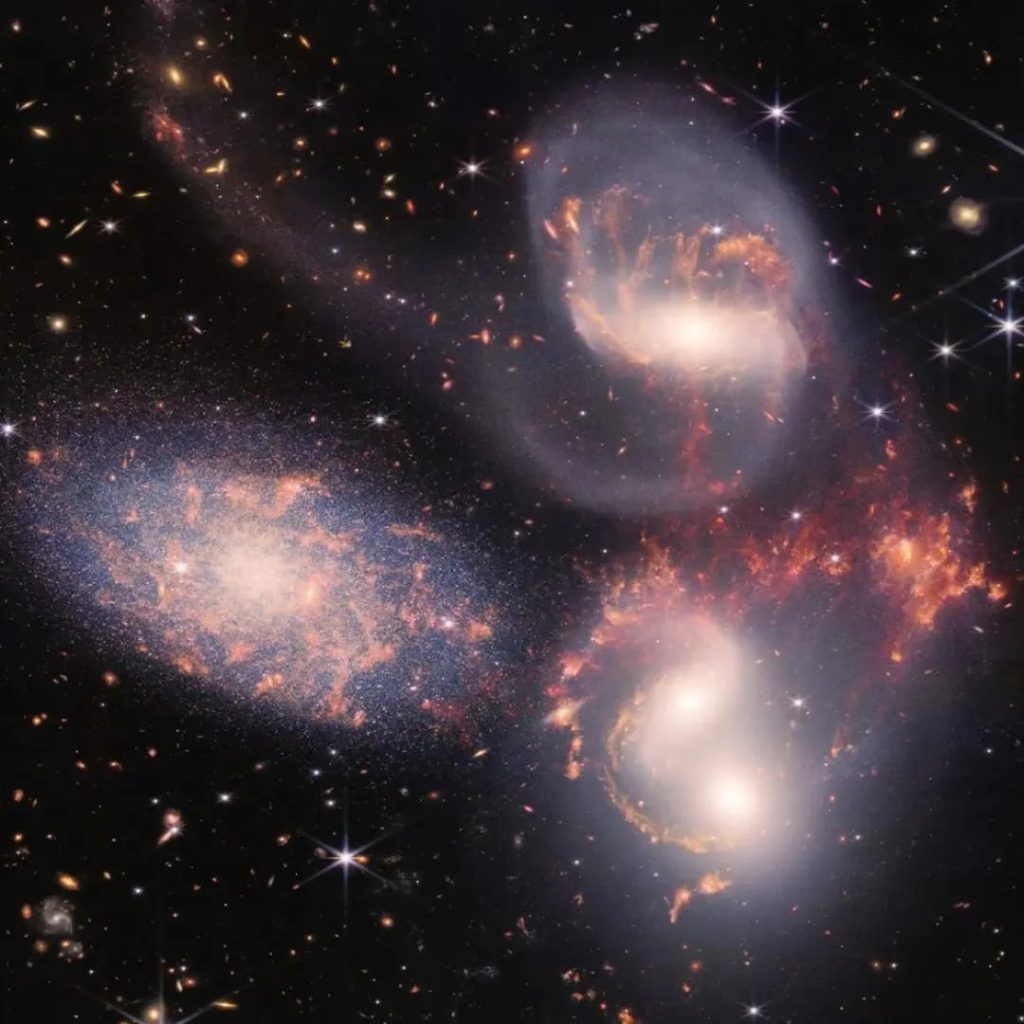
A collection of galaxies known as Stephan’s Quintet is engaged in a cosmic dance in which stars collide and form (the red areas in the image below).
With more than 150 million pixels and an area of the sky that is one-fifth the diameter of the Moon (as seen from Earth), the latest JWST image of Stephan’s Quintet is monstrously large. It was created using approximately 1,000 picture files, and it aids in our understanding of how these powerful galactic interactions influence galaxy evolution.
The NGC 7319 galaxy at the top of the photograph shows evidence of material swirling around a large black hole. With all the stuff it is consuming, it is emitting light energy 40 billion times more powerful than our Sun.
Although there are five galaxies visible, only four of them are actually close to one another. The galaxy on the left, NGC 7320, is 40 million light years away from us, whereas the other galaxies are located at a distance of about 290 million light years.
The Carina Nebula
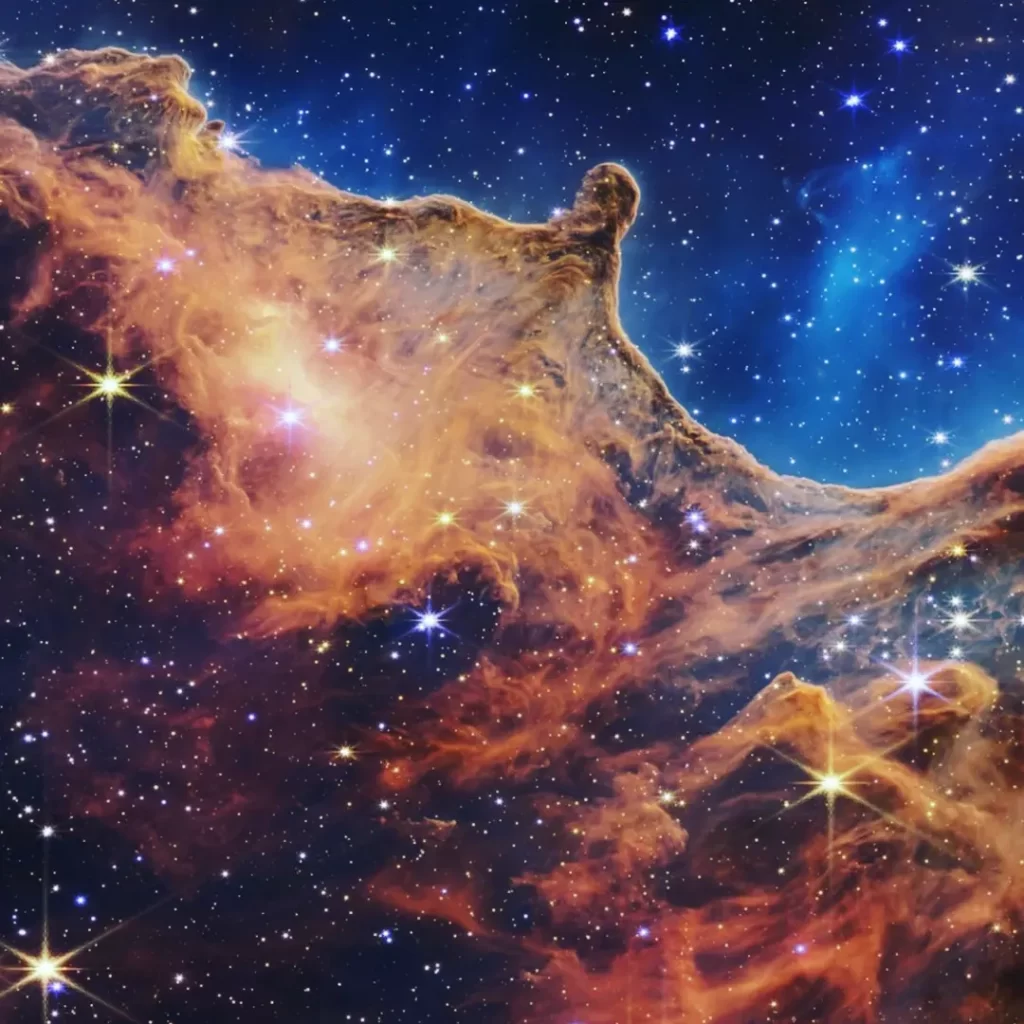
The stunning Carina Nebula, viewed as we’ve never seen it before, filled with hundreds of brand-new stars, comes last but certainly not least. The fringe of a neighboring young star-forming area known as NGC 3324 can be seen in this amazing photograph.
There are numerous enigmatic new structures to investigate due to the astounding level of detail in the infrared JWST image.
The biggest peak in this photograph, known as the “Cosmic Cliffs,” is a startling 7 light-years high, and powerful radiation has steamed blue ionized gas off of it.
Newborn stars are bursting into life at the top, and the stellar wind they produce pushes the orange-colored gasses away. This ignites new stars or may prevent the formation of new stars altogether.
Even more astounding is the fact that we are all made out of the same stellar material as seen in this picture.
